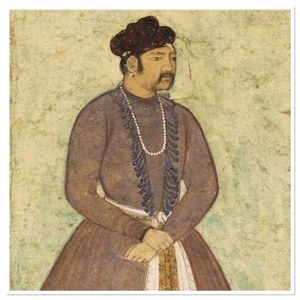Trade amongst humans are very old and so too the trade in herbs and spices. Neolithic discoveries prove that it has happened from at least the 10th millennia BC and it is of course still the case today. All we need do is visit our nearest grocery store and all the wonderful spices from all over is available at our finger tips. For our forefathers is was by far more a diplomatic endeavour. The Spice Route, existing from at least 3000BC according to Egyptian records, was used by the Egyptians, the Arabs, the Ethiopians and the Indians to trade various spices and luxury goods. What were on the ancient’s import lists? Well, there were spices, ebony, fine textiles, sea shells, obsidian, silk, precious stones and incense, the latter giving rise to the Incense route. Later gold, leather of rare animals and pearls were added to the desired items list. This made the supplying kingdoms/empires/regions very wealthy and it caused other areas to either produce their own luxury goods or to become middle men for such trade.
India was not only the most desired supplier of spices but also their fine textiles, produced from at least 3000BC, made of silk and cotton embroidered with gold and precious stones were in high demand. Over time more empires joined the trading and this no doubt gave rise to the Persian Royal Road and later the Silk Road, because the Spice and Incense Routes were mostly dominated by the Egyptians, Arabs, Ethiopians and the Indians. Finding other ways of obtaining these luxury items that now became a need rather than a want, would ensure that the Persians and other empires could control the trade from another vantage point and pay less taxes and tributes to all the middle men. It also created the desire to expand empires so that they could finally own the lands in which these special items originated. Trading directly with suppliers also meant that you could offer your own goods for trade and the Persians and later the Greek rulers of Persia, the Seleucids, not only traded their own unique vegetation, but also their exquisitely woven Persian carpets and textiles. It soon became as high a commodity as any spices, silks and precious stones. A millennia later when the Ottomans came into power and obstructed European trading with the East, the Europeans wanted to find another way to their luxury goods and the Portuguese sailed around Africa to become the rulers of the Spice route around Africa, whilst the Spanish found the Americas. Soon the Dutch and the Brittish would join the lucrative trade and life, as we knew it, was changed for ever to the global trade that we know today.
But before all of that would happen, India as much as any main trading country, became a hub for foreigners. But unlike its co-silk producing country, China, due to its highly valued spices it would become a country that everyone wanted a piece of. There were numerous invasions and dynasty changes through the centuries. Strangely enough, for all the foreign cultural influences, India would only start to produce carpets itself from around the 11th century with Muslim conquests and it really only took off with the establishment of the Mughal Empire in the 16th century. Babur, the ruler of the Mughal Empire, was a direct descendant of Tamerlane (Timur), the Turco-Mongol conqueror, from his father’s side; and a direct descendant from Genghis Khan from his mother’s side. Being born in Persia, Babur loved the Persian culture and it is rumoured that when he established the Mughal Empire in India, he was disappointed with the “lack of luxury” there. He set out to introduce a Persianate ethos in his empire that would influence his successors as well. One of the items he missed the most were Persian carpets, so he brought some weavers from Persia to produce carpets in his kingdom, giving rise to the now famous Mughal carpets. These carpets’ designs were influenced by the design of Kashan and Kerman, etc. He was a great promoter of the arts and he set up royal carpet weaving centres in Agra, Delhi and Lahore. When the prisoners in his kingdom became restless and revolted, he instructed the master weavers of Persia to teach the inmates the skill of weaving. This not only calmed the prisoners, but also made them productive and taught them a skill that would stay with them for life. Some of the inmates eventually outshone their teachers and these carpets were used in the palaces as well as diplomatic gifts. The Indian carpet weaving industry would receive a further push forward a century later when Shah Jahan, builder of the Taj Mahal, came to power. He not only promoted the carpet weaving arts but also inspired changes in designs to include more Indian designs in the carpets.
https://en.wikipedia.org/wiki/Babur
http://store.bashircarpets.com/indiancarpets.html
https://en.wikipedia.org/wiki/Incense_Route
https://en.wikipedia.org/wiki/Spice_trade
https://www.thoughtco.com/the-discovery-of-fire-169517
http://char.txa.cornell.edu/IndianTex.htm



